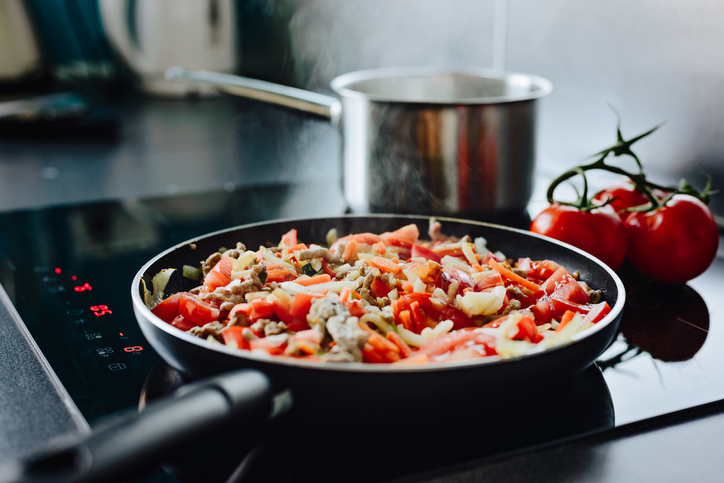I recently moved into a new home and among the appliances I chose for my kitchen is an induction stove. I’m a lover of gas cooktop and gas bbq cooking. I find both to be faster than electric cooktops, controllable and even fun to cook on. I’ve even been known to cook pies on my bbq! Lately, though, I’ve been concerned to read about the off-gassing associated with gas cooking indoors. Increasingly studies are coming out that talk about high levels of off-gassing that can only be mitigated by having a large kitchen, range hood fans going and all the windows open. That’s simply not practical for Canadian 4-season life. Neither was it practical for my small house.
For those, like me, who have encountered the frustrations of conventional electric ranges or apprehensions regarding gas counterparts, the induction stove emerges as a compelling solution, blending safety, efficiency, and precision in culinary endeavors.
In contrast to traditional electric stoves reliant on resistive coil burners, induction stoves harness magnetic fields to directly transmit energy to cookware, providing unparalleled expediency in heating and precision in temperature modulation. Think about boiling water in under two minutes and instantaneous adjustments to heat intensity—attributes that hallmark induction stoves, rendering cooking experiences safer and more effective. Let me just say that I dare not walk away from anything on the stove. Moreover, the swift dissipation of heat upon pan removal ensures ease of cleanup and mitigates the risk of inadvertent burns, enhancing kitchen safety protocols for when my grandchildren are around ‘helping’ me cook. Or maybe just me in my older years.
A crucial consideration in the induction stove paradigm is the requisite use of magnetic cookware, necessitating the giving away of any non-magnetic materials such as aluminum or copper in favor of stainless steel or cast iron alternatives. I love cooking in cast iron so this was a win for me. While this adjustment may necessitate minor alterations, the advantages conferred by induction cooking eclipse any inconveniences incurred.
However, doing your research and shopping around is warranted in the selection of induction stoves, as discrepancies in performance may manifest across diverse models. Optimal efficacy is often associated with midrange or premium offerings. Various models come with air frying capabilities, dual ovens and a few other features depending on the manufacturer and price point.
Beyond culinary expedience, the adoption of induction stoves brings noticeable health and environmental benefits. Conventional gas stoves have been implicated in the dissemination of harmful indoor air pollutants, exacerbating health risks such as asthma and cardiovascular ailments. Moreover, the environmental toll of gas stoves extends to methane emissions and climate change exacerbation, precipitating a compelling impetus for alternative solutions.
In embracing induction stoves, discerning consumers not only safeguard personal well-being but also contribute to mitigating environmental degradation. By circumventing the pitfalls of gas stoves and cultivating a sustainable culinary ethos, proponents of induction cooking exemplify stewardship in the gastronomic realm.
Thus, for connoisseurs desiring to navigate the culinary landscape with aplomb while espousing environmental conscientiousness, the induction stove stands as a beacon of innovation and efficacy. Embrace the culinary evolution and embark on a journey toward gastronomic excellence with induction technology as your steadfast ally. Save your gas cooking for the outdoor bbq which is exactly what I’m doing.






Add Your Voice
0 Comments
Join the Discussion